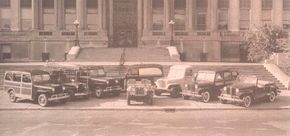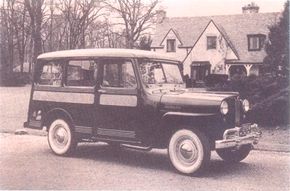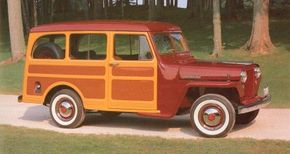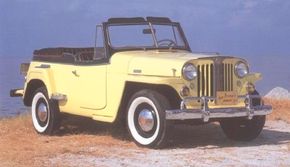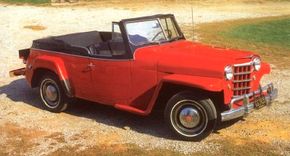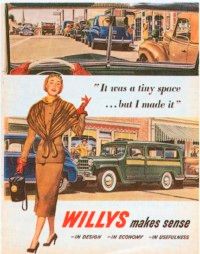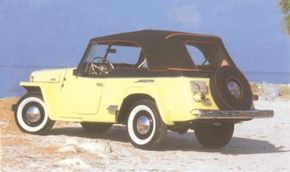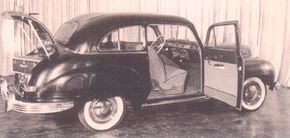Even before the Japanese attack on Pearl Harbor plunged the United States into the thick of World War II, the jeep's service with the Allied forces was making it almost legendary. This fact was not lost upon the astute Ward Canaday, Willys-Overland's chairman and principal stockholder. The fresh new image that Willys had been vainly seeking with the Americar was being handed to the company on the proverbial silver platter.
Looking ahead, Canaday began to visualize the jeep in the postwar world and to share that vision with the public. To get the ball rolling, he hired a well-known artist, I. B. Hazelton, to do a series of 24 paintings depicting the jeep in a variety of settings.
Advertisement
Jeep Image Gallery
In many of the pictures, the jeep was shown in the midst of battle. In other cases, the artist displayed the jeep in a number of non-combatant roles ranging from snowplow to fire-fighter to farmer's jack-of-all-trades. Advertisements based on these paintings were so effective that Life magazine displayed some of them in a feature article.
Another famous advertisement of the period presented the Americar as "the jeep in civvies." Willys got in a spot of trouble over that one, for in truth the only thing the Americar had in common with the jeep was its engine. But nobody could question the ad's effectiveness.
Although Willys was eventually forced to pull the ads, the damage was done: Even though Willys was not the sole producer of jeeps, America began to think of them as "the jeep company."
Still, the most effective advertising the jeep received during the war years came at no cost to its manufacturer, in the form of news releases. A human interest story from overseas, for instance, was accompanied by photographs showing some GI's with their jeep, helping an English farmer by pulling his mowing machine, rake, and loader.
On the other side of the world, wide coverage was given to the jeep's role in laying underground cables linking widely separated airfields in Australia. The implications for possible postwar civilian uses of the jeep were too obvious to require editorial comment.
In December 1943, George W. Ritter, vice president and general counsel of Willys-Overland, was asked by Alabama Congressman Carter Manasco to provide advance information regarding the little quarter-tonner's possible conversion to civilian life. Ritter was only too happy to oblige.
One might logically have expected that such a request would have come from a representative of Willys's home state of Ohio, rather than someone from the deep South. However, Congressman Manasco happened to chair the committee that was dealing with postwar pre-planning.
In a lengthy and detailed reply, Ritter stated that although his company was highly enthusiastic about the postwar potential of the jeep, to be fully suitable for civilian use the military model would require considerable modification. Among the recommendations he outlined for the Manasco Committee were the following:
- Inclusion of a power takeoff, in order to supply power for a belt pulley attachment. Thus the jeep could be efficiently operated as a stationary power unit.
- More suitable gear ratios for both transmission and transfer case, in order to permit both low-speed pulling of heavy loads and highway speeds as high as 60 miles per hour.
- More effective cooling, for continuous low-gear operation.
- A larger-diameter clutch, to cope with increased starting loads and other circumstances creating excessive strain.
Ritter went on to point out that an adequate network of service facilities would be required if the jeep was to be fully practicable for civilian use. Implicit here was the admission that Willys-Overland's prewar dealer organization was sparse, ill-equipped, and certainly not trained in matters pertaining to the jeep. What was needed was a brand new dealer network, with well-trained personnel and an adequate stock of spare parts.
Continue to the next page to learn more about the postwar roles jeeps filled.
For more information on Jeeps, see:
- History of Jeep
- Consumer Guide New Jeep Prices and Reviews
- Consumer Guide Used Jeep Prices and Reviews
Advertisement
